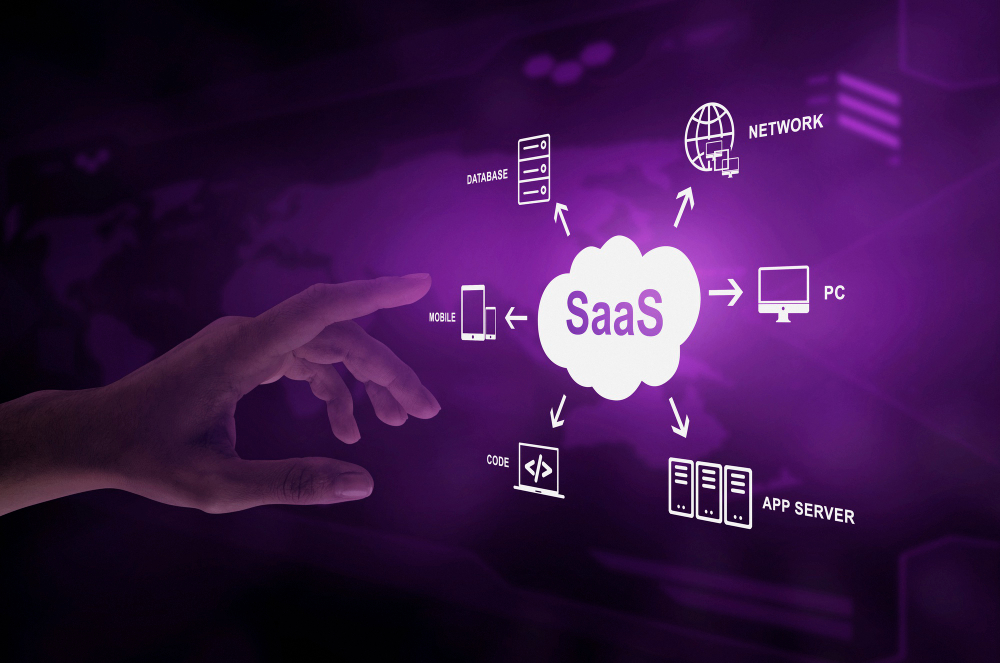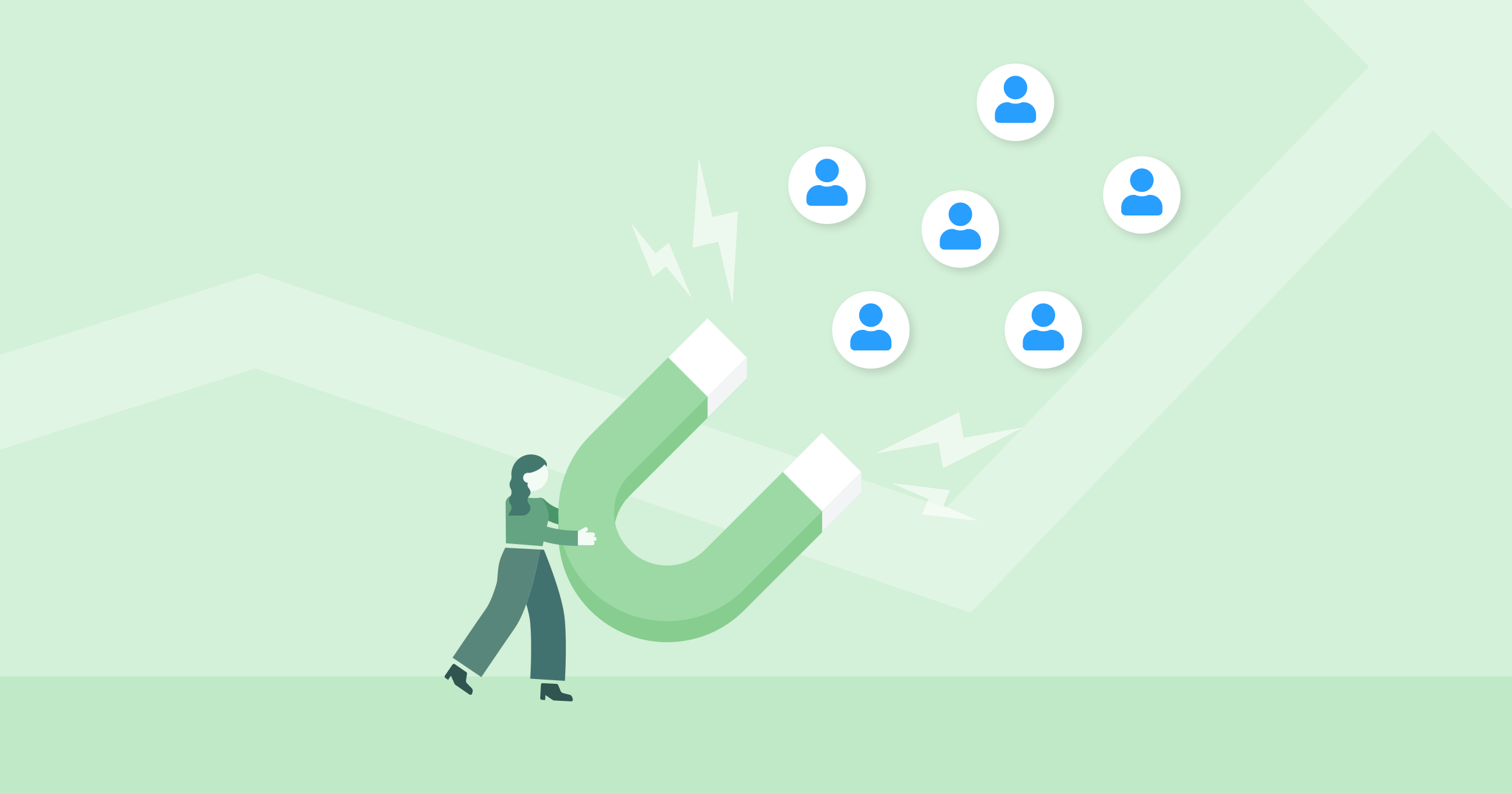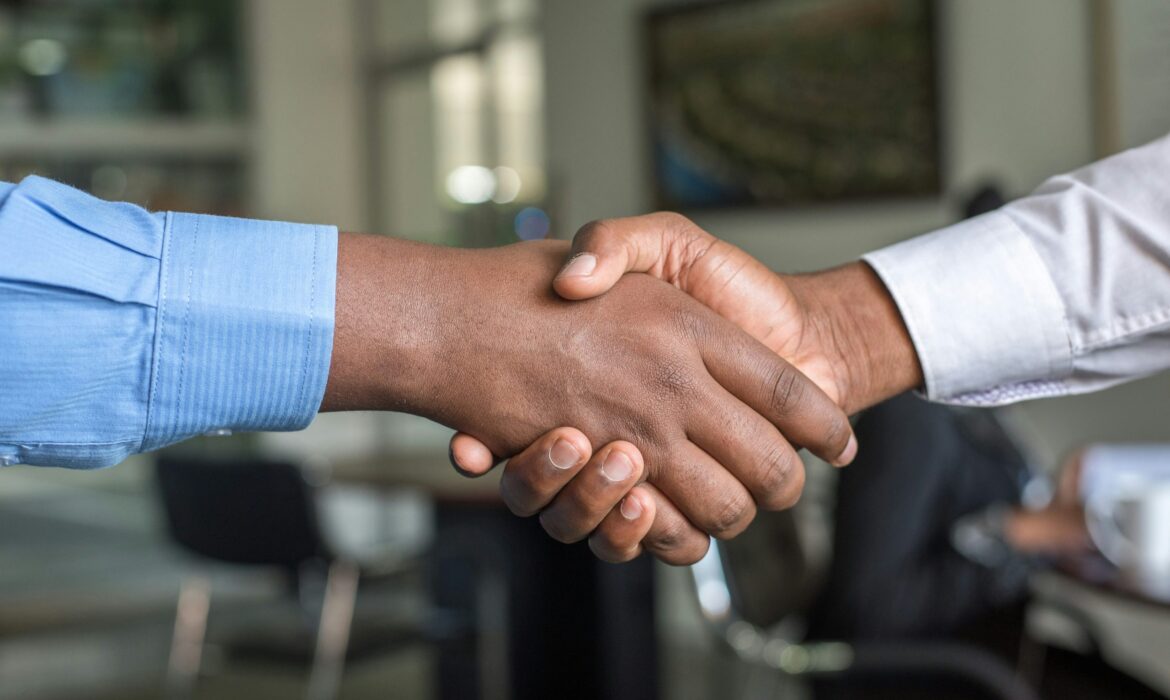Funding Your SaaS Dream: Bootstrapping, VC, and More
The siren song of launching a Software-as-a-Service (SaaS) business is alluring: recurring revenue, scalability, and the potential for explosive growth. But before diving headfirst into development, a crucial question arises: how do you fund your SaaS dream? The answer, like most things in entrepreneurship, isn’t black and white. This guide explores the three main funding paths – bootstrapping, venture capital (VC), and alternative options – helping you choose the one that best aligns with your vision and risk tolerance.
Bootstrapping: Building from the Ground Up
Bootstrapping, the self-made route, involves financing your SaaS through personal savings, loans, and, crucially, revenue generated by your product. It’s an exercise in frugality and adaptability, demanding resourcefulness and a laser focus on profitability.
Pros:
- Ownership and control: You call the shots. No external investors dictating direction or pressuring for unrealistic growth.
- Flexibility: Pivot and iterate based on market feedback without facing investor scrutiny or pressure to stick to a pre-defined plan.
- Alignment with long-term vision: You build the company you truly believe in, without short-term profit pressures from investors.
Cons:
- Limited resources: Growth can be slow due to restricted capital. Hiring talent, scaling marketing, and expanding to new markets might be hindered.
- Pressure and stress: The weight of success rests solely on your shoulders. Self-doubt and financial strain can be significant burdens.
- Limited network: Access to top talent, experienced advisors, and industry connections might be restricted.
Bootstrapping is ideal for:
- Founders with a clear vision, strong technical skills, and a realistic growth plan.
- Niche markets with lower funding requirements.
- SaaS products with clear value propositions and demonstrably quick paths to profitability.

Venture Capital: The Rocket Fuel for Growth
Venture Capital firms pump significant funds into high-growth potential startups, aiming for exponential returns. This path offers quick access to capital, mentorship, and industry connections, but comes with strings attached.
Pros:
- Rapid growth: VC funding fuels aggressive marketing, talent acquisition, and product development, accelerating market penetration.
- Expertise and network: VCs offer valuable connections, industry insights, and strategic guidance from experienced advisors.
- Validation and credibility: Securing VC funding is a public vote of confidence, attracting top talent and potential customers.
Cons:
- Loss of control: VCs often have significant influence on decision-making, product roadmap, and even your role in the company.
- Pressure to perform: The expectation is to deliver hyper-growth, which can lead to unsustainable practices and burnout.
- Investor expectations: Exit strategies like acquisition or IPO might be prioritized over your long-term vision for the company.
VC funding is ideal for:
- SaaS products with disruptive potential and large addressable markets.
- Founders with ambitious growth plans and a track record of execution.
- Teams ready to scale quickly and handle the pressure of high expectations.

Beyond Bootstrapping and VC: Exploring Alternative Options
The funding landscape offers more than just a binary choice. Here are some compelling alternatives:
- Angel Investors: Wealthy individuals invest in early-stage startups, often motivated by mentoring and supporting promising ventures. They offer smaller investments compared to VCs but can provide valuable guidance and industry connections.
- Debt Financing: Loans from banks or alternative lenders can provide crucial capital without sacrificing equity. However, interest rates and repayment terms can impact your cash flow.
- Revenue-Based Financing: Investors provide capital in exchange for a percentage of future revenue, aligning their interests with your success. This option eliminates upfront dilution but can limit your control over cash flow.
- Crowdfunding: Platforms like Kickstarter and Indiegogo allow you to raise capital directly from a large pool of individual investors. This option is well-suited for products with strong community appeal and engaged pre-launch audiences.
Choosing the Right Path: A Matter of Alignment
The best funding approach depends on your specific goals, risk tolerance, and the nature of your SaaS product. Carefully consider these factors:
- Growth ambitions: Do you seek steady, organic growth or explosive market domination?
- Control and freedom: Are you comfortable relinquishing some control in exchange for faster growth?
- Financial runway: How much capital do you need to achieve your initial milestones?
- Team expertise: Do you have the skills and experience to handle rapid growth fueled by VC funding?
Ultimately, the ideal funding path is the one that aligns most closely with your vision, values, and the core DNA of your SaaS dream. Remember, there’s no one-size-fits all.
Strategies for Retaining Your SaaS Customers
In the competitive world of SaaS, acquiring customers is just the first hurdle. The real challenge lies in keeping them. High churn rates can wreak havoc on your business, hindering growth and profitability. But fear not, valiant entrepreneur! This guide equips you with potent strategies to turn the tide and forge lasting relationships with your subscribers.
Understanding the Enemy: Pinpointing Churn Causes
Before formulating a battle plan, let’s identify the root causes of churn. Common culprits include:
- Unsatisfactory Onboarding: A confusing or lackluster onboarding experience leaves users feeling lost and overwhelmed, leading them to abandon ship.
- Unmet Expectations: Failing to deliver promised value or overpromising on features breeds disappointment and dissatisfaction.
- Poor Product Usability: Complex interfaces, unclear functionalities, and frequent bugs frustrate users and push them towards competitors.
- Lack of Customer Support: Unresponsive or unhelpful support teams leave users feeling unsupported and undervalued, driving them away.
- Inactive Users: Users who don’t engage with your product become vulnerable to churn. Reasons could be irrelevance to their needs, lack of awareness of its benefits, or simply forgetting about it.
- Involuntary Churn: Payment failures due to expired cards or billing issues can lead to accidental churn, impacting even satisfied customers.
Building the Arsenal: Effective Retention Strategies
Now, let’s arm ourselves with tactics to combat these churn-inducing forces:
Craft an Onboarding Odyssey:
- Personalized Approach: Tailor the onboarding experience to each user’s needs and goals. Use interactive tutorials, guided walkthroughs, and personalized welcome messages.
- Quick Wins: Help users achieve early successes that showcase your product’s value. Offer pre-populated templates, sample workflows, and readily-available resources.
- Community Connection: Introduce users to your user community through forums, groups, or live chat. This fosters peer-to-peer learning and builds a sense of belonging.
Manage Expectations Like a Jedi Master:
- Be Transparent: Clearly communicate your product’s capabilities and limitations. Highlight its strengths, but don’t overhype features that are under development.
- Gather Feedback Continuously: Conduct surveys, user interviews, and track product usage data to understand user needs and pain points. Address these concerns through product updates and roadmap transparency.
- Education is Key: Offer comprehensive documentation, webinars, and training sessions to ensure users understand how to maximize the product’s value.
Craft an Intuitive UX that Sings:
- Prioritize User-Centric Design: Conduct usability testing and gather feedback to identify and address pain points in your interface. Prioritize simplicity, clarity, and intuitive navigation.
- Invest in Continuous Improvement: Regularly iterate on your product based on user feedback and industry trends. Stay ahead of the curve by offering innovative features and addressing evolving needs.
- Provide Contextual Help: Offer in-app tutorials, tooltips, and contextual guides to assist users when they need it most.
Build a Support Fortress:
- Proactive Engagement: Don’t wait for problems to arise. Proactively reach out to users, inquire about their experience, and offer assistance.
- Omnichannel Support: Offer multiple support channels such as live chat, email, phone, and knowledge base articles to cater to different user preferences.
- Empower Your Team: Equip your support team with the knowledge, resources, and authority to resolve issues promptly and efficiently. Go the extra mile to exceed expectations.
Revive Dormant Accounts:
- Segmentation is Key: Segment your inactive users based on their past behavior and inactivity duration. Tailor reactivation efforts accordingly.
- Relevancy Reigns Supreme: Highlight new features, success stories, and educational content relevant to their specific needs. Offer personalized incentives to entice them back.
- Win-Back Campaigns: Craft targeted email campaigns or personalized outreach messages reminding them of the value they’re missing and offering special deals or exclusive content.
Fortify Against Involuntary Churn:
- Streamlined Billing: Offer flexible payment options, clear communication about upcoming charges, and automated reminders for expiring cards.
- Dunning Management: Implement a dunning process that balances recovering lost revenue with maintaining positive customer relationships. Offer alternative payment methods and flexible repayment options.
- Security and Reliability: Prioritize data security, ensure service uptime, and proactively communicate maintenance schedules to minimize disruptions.
Leverage the Power of Analytics:
- Identify Churn Indicators: Track key metrics like user engagement, support interactions, and product usage to identify users at risk of churn.
Proactive Intervention: Implement early warning systems and trigger personalized interventions for at-risk users to address potential issues before they escalate.
Building Strategic Partnerships for SaaS Growth
In the hyper-competitive world of Software-as-a-Service (SaaS), standing out from the crowd and achieving sustainable growth isn’t always easy. While organic expansion through marketing and sales plays a crucial role, SaaS businesses are increasingly turning to a powerful lever: strategic partnerships.
These collaborations offer a win-win scenario by combining expertise, resources, and reach to unlock new opportunities, accelerate growth, and solidify market positions. But building successful partnerships isn’t simply about throwing two logos together. It requires a well-defined strategy, careful partner selection, and nurturing mutually beneficial relationships.
Why Embrace Partner Power?
The benefits of strategic partnerships are manifold, encompassing:
- Market Expansion: Reach new audiences and penetrate untapped markets through your partner’s established network and expertise.
- Increased Credibility: Gain instant legitimacy and trust by associating with respected brands in your industry.
- Enhanced Offerings: Combine your strengths with your partner’s complementary solutions to create more robust and appealing packages.
- Sales & Marketing Boost: Leverage your partner’s marketing channels and sales force to amplify your reach and conversion rates.
- Innovation Acceleration: Spark new ideas and accelerate product development through collaborative brainstorming and joint efforts.
- Cost-Effectiveness: Reduce development and marketing costs by sharing resources and expertise with your partner
Finding the Right Fit: Choosing Your Partner Wisely
Not all partnerships are created equal. Finding the right fit is crucial for achieving mutually beneficial outcomes. Here’s how to choose wisely:
- Target Audience Alignment: Identify partners whose customer base overlaps with yours, ensuring cross-marketing potential.
- Complementary Offerings: Look for partners whose solutions complement yours, not compete, creating a holistic value proposition.
- Shared Values & Vision: Partner with companies that share your core values, ethical standards, and future aspirations.
- Track Record & Reputation: Prioritize partners with a proven track record of success and a strong reputation in the industry.
- Collaborative Culture: Select partners known for fostering open communication, transparency, and a collaborative approach.

Building Lasting Partnerships: From Handshake to High-Five
Once you’ve identified the right partners, it’s time to build strong, lasting relationships. Here’s the winning formula:
- Define the Partnership Framework: Establish clear goals, roles, responsibilities, and key performance indicators (KPIs) for both parties.
- Open Communication & Transparency: Foster transparency and encourage frequent communication to address concerns and opportunities.
- Joint Marketing & Sales Initiatives: Collaborate on co-branded marketing campaigns, events, and sales webinars to maximize reach and impact.
- Product Integration & Co-Development: Explore opportunities for product integrations or joint development that offer enhanced value to customers.
- Regular Relationship Management: Invest in regular meetings, reviews, and feedback loops to ensure continuous improvement and alignment.

Beyond Handshakes: Examples of Powerful Partnerships
The SaaS landscape boasts numerous examples of successful partnerships that have fueled impressive growth. Here are a few:
- HubSpot & Zoom: This integration combines powerful marketing automation with seamless video conferencing, unlocking new possibilities for customer engagement.
- Salesforce & Slack: This partnership integrates enterprise communication with CRM functionalities, boosting productivity and collaboration for sales teams.
- Shopify & Stripe: This integration simplifies payment processing for Shopify merchants, streamlining their customer journey and improving conversion rates.
Embracing the Future of Partnerships
The era of siloed operations is fading. In today’s dynamic landscape, partnering is no longer an option, but a strategic imperative for SaaS businesses. By carefully selecting partners, nurturing strong relationships, and fostering mutually beneficial collaborations, SaaS companies can unlock explosive growth potential and achieve sustained success in the ever-evolving digital landscape.
Enterprise Customer Acquisition Strategies: Targeting High-Value Clients
In the vast ocean of the B2B world, enterprise customers – often referred to as “whales” due to their significant revenue potential – represent the elusive yet highly coveted prizes. These large organizations come with hefty contracts, long-term relationships, and the ability to catapult your business to new heights. But like landing an actual whale, acquiring them requires specialized knowledge, unwavering dedication, and a well-defined strategy.
This guide dives deep into the intricacies of “whale hunting,” equipping you with the essential strategies to attract, engage, and ultimately win over high-value enterprise customers.
Understanding the Whale:
Before setting sail, it’s crucial to map the terrain. Begin by thoroughly understanding your target enterprise clients. Conduct in-depth research to grasp their:
- Pain points: Identify the specific challenges they face, whether it’s operational inefficiencies, security vulnerabilities, or market disruption. Deeply understanding their pain points allows you to tailor your value proposition to provide a specific solution.
- Decision-making process: Enterprise purchases often involve multiple stakeholders with diverse interests and priorities. Knowing who influences decisions, their approval processes, and potential objections helps you navigate the internal dynamics effectively.
- Technology landscape: Analyze their existing technology stack and identify potential integration points or compatibility issues. Demonstrating smooth integration with their existing systems increases adoption likelihood.

Crafting the Lure:
Whales aren’t easily persuaded by generic bait. Your value proposition needs to be laser-focused and resonate with their specific needs. Here’s how:
- Focus on ROI: Quantify the value you offer. Translate features into concrete benefits like cost savings, increased productivity, or market share gains. Use data, case studies, and testimonials from similar enterprises to solidify your claims.
- Emphasize security and compliance: Enterprise customers prioritize data security and regulatory compliance. Showcase your robust security protocols, industry certifications, and compliance with relevant regulations.
- Personalize the message: Don’t blast generic emails. Research individual decision-makers, understand their priorities, and tailor your outreach accordingly. Show them you see them as unique entities with specific needs.
Casting the Net:
Now that you have a compelling message, it’s time to reach your ideal audience. Here are effective channels to explore:
- Targeted content marketing: Create high-quality content like white papers, webinars, and blog posts addressing the challenges faced by your target enterprises. Distribute your content through relevant industry publications, social media, and email marketing campaigns.
- Strategic partnerships: Collaborate with industry leaders, consultants, or complementary solution providers to gain access to their networks and build trust with potential clients.
- Attending industry events: Participate in conferences, trade shows, and industry gatherings to connect with decision-makers directly. Showcase your solution, network with potential clients, and gather valuable insights.

Hooking the Big One:
Once you’ve attracted interest, it’s time to demonstrate your expertise and build trust. Here’s how to reel them in:
- Tailored demos and presentations: Don’t rely on generic presentations. Tailor your demos to address the specific needs and pain points of each potential client. Highlight how your solution integrates seamlessly with their existing systems and infrastructure.
- Proof of concept (POC): Offer POCs to allow potential clients to experience the real-world benefits of your solution in a controlled environment. This reduces their risk and builds confidence in your offering.
- Executive engagement: Secure meetings with key decision-makers. Be prepared to address their concerns, answer their questions, and demonstrate your value proposition at the highest level.
- Building relationships: Don’t underestimate the power of personal relationships. Foster genuine connections with key decision-makers, understand their individual motivations, and become a trusted advisor.
The Long Game:
Landing a whale is only the beginning of the journey. Building a long-term, mutually beneficial relationship is key. Here’s how:
- Exceed expectations: Deliver exceptional customer service. Be proactive in addressing their needs, provide ongoing support, and regularly demonstrate the value you bring.
- Become a strategic partner: Go beyond simply providing a solution. Offer strategic insights, industry trends, and ongoing consultations to help them achieve their business goals.
- Continuous improvement: Actively solicit feedback, gather usage data, and adapt your solution to their evolving needs. Demonstrate your commitment to being a long-term partner in their success.
Remember:
- Patience is key: Acquiring enterprise customers is a marathon, not a sprint. Be prepared for a lengthy sales cycle with multiple decision-makers involved.
- Agility is essential: Be adaptable and responsive to their changing needs and market dynamics.
Build a winning team: Assemble a team with deep industry knowledge, strong communication skills
Community & Connection: Building a Network of Support and Collaboration for Online Entrepreneurs
Building a successful online business requires more than just technical skills and a great product or service. It also relies heavily on community and connection. As an online entrepreneur, having a network of support and collaboration is essential for growth, learning, and navigating the challenges of entrepreneurship. In this article, we will explore the importance of community, strategies for building a network of support, and the benefits of collaboration for online entrepreneurs.
The Importance of Community
Community plays a vital role in the success of online entrepreneurs. It provides a sense of belonging, offers support and encouragement, and helps to combat the isolation often experienced by those working online. A strong network of like-minded individuals who understand the challenges and joys of entrepreneurship can be invaluable in your journey.
Strategies for Building a Network of Support
Join Online Communities: Seek out and join online communities that cater to entrepreneurs in your field or niche. Platforms like LinkedIn Groups, Facebook Groups, and specialized forums are great places to connect with fellow entrepreneurs. Engage in discussions, ask questions, and offer help to establish your presence and build relationships.
Attend Industry Events and Conferences: Attend local or virtual industry events and conferences to meet other entrepreneurs in person. These events provide opportunities for networking, learning, and collaboration. Take the initiative to introduce yourself, exchange business cards or contact information, and follow up with individuals you connect with.
Participate in Mastermind Groups: Mastermind groups bring together a small group of like-minded entrepreneurs who meet regularly to support each other, share insights, and hold each other accountable. Joining a mastermind group can provide a safe space for open discussions, brainstorming, and problem-solving.
Leverage Social Media: Utilize social media platforms like Twitter, Instagram, and LinkedIn to connect with other online entrepreneurs. Engage with their content, share your thoughts, and build relationships. Direct messages can also be an effective way to initiate conversations and extend your network.
Collaborate on Projects: Seek out opportunities for collaboration with other entrepreneurs. This could involve joint ventures, co-creating content, hosting webinars or podcasts together, or organizing online events. Collaborative projects not only expand your network but also allow for shared expertise and increased exposure.

The Benefits of Collaboration
Collaboration offers numerous benefits for online entrepreneurs. Here are some key advantages:
Shared Knowledge and Expertise: Collaborating with others allows you to tap into their knowledge and expertise. Each person brings unique skills and experiences to the table, resulting in a more comprehensive understanding of a problem or project.
Increased Reach and Exposure: Collaborating with others exposes you to a wider audience. When you work with someone else, their network becomes accessible to you, and vice versa. This expanded reach can lead to increased visibility, new customers, and opportunities for growth.
Accountability and Motivation: Collaborating with others holds you accountable and keeps you motivated. When you work alongside someone who shares your goals, you are more likely to stay on track, meet deadlines, and push through challenges.
Complementary Skillsets: Collaboration allows you to leverage the strengths of others. By working with individuals who have different skillsets or areas of expertise, you can fill in your own knowledge gaps and deliver a more robust final product or service.
Creative Problem-Solving: When faced with a challenge, collaborating with others can lead to innovative solutions. Different perspectives and ideas can spark creativity and help you see problems from a fresh angle.

Nurturing and Maintaining Connections
Building a network of support and collaboration is not a one-time effort but an ongoing process. Here are some tips for nurturing and maintaining your connections:
Be Genuine: Authenticity is key in building relationships. Be genuine in your interactions, show interest in others, and offer assistance when you can. Building trust and rapport takes time, but it is essential for establishing long-lasting connections.
Give Value First: Focus on providing value to others before asking for anything in return. Share your knowledge, offer help or resources, and be generous with your time. By giving first, you establish yourself as a valuable contributor to the community.
Stay Connected: Regularly engage with your network by participating in discussions, commenting on posts, and attending events. Send periodic check-ins or follow-up messages to maintain communication and strengthen relationships.
Offer Collaboration Opportunities: Be proactive in seeking out collaboration opportunities and extending invitations to others. By initiating collaborative projects, you demonstrate your willingness to contribute and create mutually beneficial partnerships.
Celebrate Successes: When members of your network achieve milestones or successes, take the time to congratulate and celebrate with them. This shows your support and fosters a sense of community and camaraderie.
Conclusion
Building a network of support and collaboration is critical for the success of online entrepreneurs. By actively seeking out opportunities to connect with like-minded individuals, participating in online communities, attending events, and offering collaboration, you can create a strong support system that will propel your entrepreneurial journey.
Remember that building a network takes time and effort. Be patient, consistent, and genuine in your interactions. Nurture and maintain your connections, and continuously seek ways to contribute and add value to the community. Through community and connection, you can amplify your impact, overcome challenges, and achieve greater success as an online entrepreneur.
The Power of Partnerships: Collaborating with Other Online Businesses for Mutual Growth
In the ever-evolving landscape of online business, competition is fierce. But amidst the struggle to climb the ranks, a powerful strategy emerges: collaboration. Partnering with other online businesses can unlock a hidden potential for mutual growth, propelling both parties towards shared success. This article delves into the reasons why collaboration works, explores different types of partnerships, and offers practical tips to initiate and nurture successful alliances.
Why Collaborate?
The benefits of online business partnerships are manifold and extend far beyond simply increasing market share. Here are some key reasons why joining forces can be a game-changer:
- Expanded Reach and Audience: Accessing new customer segments is a constant challenge. Partnerships provide a gateway to your partner’s established audience, exposing your brand to a wider group of potential customers who might not have found you otherwise. This cross-pollination of audiences benefits both parties, leading to increased brand awareness and customer acquisition.
- Enhanced Credibility and Trust: Partnering with reputable businesses strengthens your brand image by association. By aligning yourself with complementary companies, you project a sense of authority and expertise, fostering trust and confidence in your own offerings.
- Combined Resources and Expertise: No business has all the answers. Collaboration allows you to leverage your partner’s unique strengths and resources, filling in gaps in your own knowledge or skillset. This can be anything from technological expertise to marketing reach, ultimately leading to improved product development, innovation, and overall efficiency.
- Cost-Effective Growth: Building your brand and acquiring customers can be expensive. Partnerships allow you to share marketing efforts, co-host events, or jointly develop content, effectively stretching your marketing budget further and maximizing your return on investment.
- Innovation and Problem-Solving: Bringing together diverse perspectives fosters a breeding ground for creative solutions. By collaborating on projects, you can tackle challenges from different angles, leading to innovative approaches and breakthroughs that might not have been possible individually.
.jpg)
Types of Partnerships:
The world of online collaboration offers a variety of avenues to explore. Here are some common partnership models:
- Co-marketing: This involves combining resources and expertise to promote each other’s products or services through joint marketing campaigns, social media collaborations, or co-hosted webinars.
- Influencer marketing: Partnering with established influencers in your niche allows you to tap into their engaged audience and leverage their credibility to promote your brand.
- Affiliate marketing: In this model, you offer a commission to your partner for every sale they generate through their promotional efforts.
- Strategic alliances: Long-term collaborations involving joint product development, technology sharing, or market expansion efforts.
- Joint ventures: This entails creating a separate entity owned and operated by both partners, allowing for deeper collaboration and shared profits on specific projects.
Building Successful Partnerships:
Finding the right partner is crucial. Look for businesses that share your target audience, values, and long-term vision. Here are some steps to follow:
- Identify common goals and objectives: Clearly define what each party hopes to achieve through the partnership. Aligned goals ensure everyone is working towards the same outcome.
- Negotiate a clear agreement: Outline the terms of the partnership, including roles, responsibilities, revenue sharing, and dispute resolution mechanisms. A formal agreement fosters transparency and avoids misunderstandings.
- Open communication and collaboration: Regularly communicate with your partner, share information, and actively collaborate on projects. Transparency and trust are essential for a successful partnership.
- Measure and track results: Establish clear metrics to track the success of your partnership. Regularly analyze data and adjust your strategy as needed to ensure you’re both achieving your goals.

Examples of Successful Collaborations:
The power of online business partnerships is evident in countless success stories. Here are a few examples:
- Spotify and Starbucks: This partnership allows Starbucks customers to pay for their coffee and stream Spotify seamlessly, offering a convenient and personalized experience for both brands.
- Netflix and YouTube: Netflix partnered with YouTube to create personalized trailers and recommendations, leveraging YouTube’s vast audience to promote new content and drive subscriptions.
- Warby Parker and TOMS: These eyewear companies collaborated on a limited-edition collection, raising awareness for eye care charities and expanding their respective customer bases.
Conclusion:
In a fiercely competitive online landscape, collaboration is not just an option, it’s a strategic imperative. By joining forces with the right partners, you can unlock exciting opportunities for mutual growth, expand your reach, enhance your brand image, and drive innovation. So, step outside the silo, embrace the power of collaboration, and watch your online business reach new heights together.
Freelancing Freedom: Landing High-Paying Gigs on Popular Platforms like Upwork and Fiverr
For many, the allure of freelancing is undeniable: set your own hours, choose your projects, and be your own boss. But amidst the freedom lies a crucial question – how do you land high-paying gigs on popular platforms like Upwork and Fiverr? Competition is fierce, and navigating the platform can be tricky. Fear not, intrepid freelancer! This guide will equip you with the knowledge and strategies to secure lucrative projects and unlock your earning potential.
Know Your Worth:
Before diving in, establish your value proposition. Research average rates for your skills and experience level on your chosen platform. Consider factors like location, industry specialization, and project complexity. Don’t undervalue yourself – remember, you’re offering expertise and delivering results. Tools like Upwork’s Talent Scout and Fiverr’s Revenue Calculator can help you estimate your fair rate.

Craft a Compelling Profile:
Your profile is your digital storefront. Make it shine! Use clear, concise language to highlight your skills, experience, and unique selling points. Include relevant keywords to improve search visibility. Showcase your best work through a well-curated portfolio. Testimonials from satisfied clients add credibility and social proof.
Target the Right Clients:
Don’t be a jack-of-all-trades, master of none. Specialize in a niche to stand out from the crowd. Research in-demand skills within your niche and tailor your profile and proposals accordingly. Actively browse job postings and identify projects that align with your expertise and interests.
Proposal Power:
The proposal is your chance to make a captivating first impression. Don’t send generic responses! Carefully read the job description and address the client’s specific needs. Highlight your relevant skills and experience, demonstrating how you’ll deliver exceptional results. Showcase your understanding of the project and offer unique solutions. Don’t be afraid to ask clarifying questions, it shows initiative and engagement.
Price Competitively:
Strike a balance between fair value and attracting clients. Consider offering tiered packages or hourly rates to cater to different budgets. Remember, the lowest bidder doesn’t always win. Focus on showcasing the value you bring and justify your pricing through expertise and results.
Build Lasting Relationships:
Freelancing isn’t just about landing gigs; it’s about building relationships. Deliver high-quality work on time and exceed expectations. Communicate effectively and provide regular updates. Be proactive and offer solutions beyond the scope of the project. Satisfied clients often become repeat customers and advocates, boosting your profile and earning potential.
Platform-Specific Strategies:
Upwork:
- Utilize Upwork Connects to reach out to potential clients directly.
- Earn badges and certifications to enhance your profile’s credibility.
- Track your activity and success metrics to identify areas for improvement.
- Consider Upwork Plus membership for increased visibility and benefits.
Fiverr:
- Create eye-catching gig packages with clear descriptions and deliverables.
- Offer additional services and bonuses to incentivize customers.
- Respond promptly to inquiries and messages to build trust.
- Leverage Fiverr Stories and Promotions to showcase your work and attract attention.
Beyond the Platforms:
Remember, online platforms aren’t the only avenues. Network with potential clients offline, attend industry events, and leverage social media to showcase your expertise. Build your own website or portfolio to establish your brand and attract direct clients.
Freelancing Freedom Awaits:
Landing high-paying gigs on Upwork and Fiverr requires dedication, strategic planning, and continuous improvement. By honing your skills, crafting a compelling profile, and understanding client needs, you’ll attract lucrative projects and build a thriving freelance career. Remember, the key is to showcase your value, deliver exceptional results, and build trust with clients. So, unleash your inner entrepreneur, embrace the freedom, and get ready to unlock your freelancing potential!
Email Marketing Mastery: Building Trust and Converting Leads
In the bustling realm of digital marketing, email remains a true magician, wielding the power to build trust, nurture relationships, and convert elusive leads into loyal customers. Unlike the fleeting magic of social media algorithms, email fosters direct communication, creating a powerful one-on-one connection that drives results. But, wielding this magic wand effectively requires more than just sending newsletters. It demands a deliberate approach, focused on building trust and guiding leads along the customer journey.
The Trust Equation: Authenticity & Value at Its Core
Building trust, like any good magic trick, requires a captivating performance. In email marketing, this translates to authenticity and value. Your audience doesn’t want robotic pitches or generic content. They crave genuineness, a brand they can connect with, and information that solves their problems or enhances their lives.
Here’s how to sprinkle authenticity into your email magic:
- Humanize your brand: Show your personality through storytelling, humor, and genuine interactions. Let your employees shine, share company culture, and reveal the faces behind the logo.
- Speak their language: Understand your audience’s demographics, interests, and pain points. Tailor your voice and message to resonate with them, avoiding industry jargon and overly formal language.
- Be transparent: Admit mistakes, celebrate wins, and address concerns honestly. Transparency builds trust and fosters a sense of community.

Value, the other essential ingredient, comes in various forms:
- Educational content: Provide insightful articles, industry reports, or how-to guides that address your audience’s needs and showcase your expertise.
- Exclusive offers and discounts: Reward subscribers with early access to new products, personalized discounts, or loyalty programs.
- Curated content: Share relevant news, industry trends, or even competitor insights, positioning yourself as a trusted resource.
- Personalized experiences: Segment your audience and send targeted emails based on their interests and behavior.
The Customer Journey: From Curious Spark to Loyal Fan
Imagine your leads as budding magicians, eager to learn your tricks. Email guides them through a series of illusions, each designed to deepen their understanding and ultimately lead them to “purchase the secret.” Here’s how to map your email journey:
Stage 1: The Grand Entrance – Welcome & Educate
- Welcome emails: Set the stage with a warm welcome, outlining your brand’s value proposition and setting expectations for future communication.
- Educational drip sequence: Introduce your audience to key concepts, address their pain points, and showcase how your product or service solves them.
- Offer valuable resources: Provide free guides, ebooks, or webinars in exchange for their email address, building your list and nurturing interest.
Stage 2: The Mesmerizing Act – Engage & Nurture
- Regular newsletters: Share valuable content, industry updates, and exclusive offers, keeping your audience engaged and informed.
- Personalized campaigns: Segment your audience and send targeted emails based on their interests and behavior, demonstrating you understand their needs.
- Interactive content: Include polls, quizzes, or surveys to encourage engagement and gather valuable data about your audience.
Stage 3: The Grand Finale – Convert & Delight
- Targeted promotional emails: Highlight specific product features, address pain points directly, and offer compelling calls to action (CTAs).
- Limited-time offers and discounts: Create a sense of urgency and incentivize purchase decisions with exclusive deals.
- Case studies and testimonials: Showcase customer success stories to build trust and social proof.
- Post-purchase emails: Thank customers for their purchase, offer support and resources, and encourage repeat business.
Remember, the magic doesn’t end with a single purchase.
Continue to nurture relationships through post-purchase emails, loyalty programs, and special offers. Encourage customer feedback, address concerns promptly, and go above and beyond to delight them.

Beyond the Sleight of Hand: Practical Tips for Email Marketing Success
- Subject lines are your magic words: Craft captivating subject lines that pique curiosity and compel opens. Test different options and track results.
- Mobile-friendliness is essential: Ensure your emails are optimized for mobile devices, where most users read them.
- Data is your magical insight: Analyze email metrics like open rates, click-through rates, and unsubscribes to understand your audience and refine your strategy.
- A/B testing is your secret weapon: Test different subject lines, email formats, and CTAs to optimize performance and maximize conversions.
Compliance is key: Always comply with anti-spam regulations and respect user privacy.
Crafting Your Online Portfolio: Showcase Skills and Attract Clients
In today’s digital landscape, having a strong online presence is no longer an option, it’s a necessity. But for creators, freelancers, and independent professionals, it’s especially crucial. Your online portfolio serves as your digital storefront, an opportunity to showcase your skills, experience, and unique value proposition to potential clients. Done right, it can be the key to attracting dream projects, landing high-paying collaborations, and taking your career to the next level.
Laying the Foundation: Self-Discovery and Strategy
Before diving into design and content, it’s essential to introspect and strategize. Ask yourself:
- Who are you? What are your core skills and strengths? What kind of work do you enjoy most? Defining your personal brand helps attract clients who resonate with your values and expertise.
- Who are you targeting? Who is your ideal client? Research their needs, preferences, and communication style. Understanding your audience helps tailor your portfolio for maximum impact.
- What are your goals? Do you want to attract long-term clients, showcase a specific skill, or land freelance gigs? Defining your objective guides the content and format of your portfolio.
Curating Your Showcase: Choosing the Right Content
Your portfolio isn’t about quantity, it’s about quality. Here’s how to curate compelling content:
- Select your best work: Choose projects that demonstrate your expertise, solve client problems creatively, and align with your target audience.
- Variety is key: Showcase diverse projects to highlight your range and adaptability. Include client testimonials, awards, or media mentions to add credibility.
- Tell the story: Don’t just showcase results, delve into the process. Briefly explain the project objectives, your contributions, and the challenges you overcame.
- Focus on visuals: People are drawn to visuals. Use high-quality images, videos, or interactive elements to bring your work to life.
- Keep it relevant: Remove outdated projects or those that don’t align with your current goals and target audience.
![]()
Building Your Platform: Choosing the Right Design and Tools
Now comes the stage where you bring your curated content to life. Consider these options:
- Personal Website: Offers complete control and customization, but requires technical knowledge. Platforms like Wix and Squarespace offer user-friendly drag-and-drop interfaces.
- Portfolio Platforms: Dedicated platforms like Behance, Dribble, and Cargo offer easy setup, pre-designed templates, and built-in communities. Consider their strengths and limitations based on your field and needs.
- Social Media Pages: While not a complete portfolio replacement, leverage LinkedIn, Instagram, or relevant social media platforms to showcase your work and connect with potential clients.
Design Tips for Captivating Attention:
- Simple and elegant: Avoid clutter and prioritize user-friendliness. Ensure a seamless browsing experience across all devices.
- Mobile responsiveness: In today’s mobile-first world, your portfolio must be optimized for smartphones and tablets.
- Strong visuals: Use high-quality images and videos that showcase your work and brand personality.
- Clear navigation: Make it easy for visitors to find your best work, contact information, and about section.
- Unique voice: Inject your personality and brand into the design and language to stand out.
Optimizing for Visibility: Attract the Right Clients
Building a portfolio is only half the battle. Attract potential clients by:
- Search Engine Optimization (SEO): Use relevant keywords and optimize your website content and page titles. Consider online directories for further visibility.
- Networking: Actively engage with potential clients on LinkedIn, industry forums, and relevant online communities. Share your work, participate in discussions, and build relationships.
- Social media marketing: Utilize social media platforms to share your portfolio, engage with potential clients, and showcase your expertise.
- Collaborations: Partner with other professionals in your field for joint projects, guest blog posts, or cross-promotion to expand your reach.

Beyond the Basics: Keeping Your Portfolio Up-to-Date
Your portfolio is a living document that should evolve alongside your career. Regularly update it with new projects, remove outdated work, and refine your content to reflect your current skillset and goals.
Remember:
- Authenticity is key: Let your personality shine through and create a portfolio that feels genuine and engaging.
- Focus on storytelling: Don’t just showcase what you did, tell the story behind your work and the impact it made.
- Proofread meticulously: Typos and grammatical errors create a negative impression. Ensure your portfolio is polished and error-free.
Seek feedback: Ask colleagues, mentors, or potential clients for constructive criticism to improve
Content Creation Craze: Mastering Different Formats for Maximum Online Revenue
The online world is flooded with content. Blogs jostle with podcasts, Instagram reels battle it out with YouTube shorts, and ebooks vie for attention against endless Twitter threads. In this bustling content jungle, creators face a critical question: how to stand out and turn their passion into profit? The answer lies in diversifying formats and becoming a master of multiple mediums.
Why Format Matters: Reaching the Right Audience, Right Now
Gone are the days when a single blog could dominate a niche. Today’s audiences are diverse, consuming information in different ways depending on their mood, purpose, and attention span. A long-form blog post might be perfect for deep dives, while a quick infographic offers an easily digestible overview. Understanding these preferences and matching your content to them is key to reaching the right audience at the right time.
Let’s explore some popular formats and their unique strengths:
- Blog Posts: Established and versatile, blogs offer in-depth exploration of topics, building authority and fostering community. Ideal for SEO, thought leadership, and evergreen content.
- Videos: The undisputed king of engagement, video grabs attention, sparks emotions, and builds personal connections. Great for tutorials, demonstrations, storytelling, and live interactions.
- Podcasts: Intimate and accessible, podcasts allow for deep conversations, expert interviews, and on-the-go consumption. Perfect for niche audiences, thought leadership, and building loyal followings.
- Infographics & Visuals: Eye-catching and concise, infographics present complex information in an easily digestible way. Ideal for data visualization, statistics, and quick summaries.
- Social Media Content: Fast-paced and interactive, social media allows for bite-sized updates, news-sharing, and building communities. Excellent for brand awareness, audience engagement, and driving traffic to other platforms.
- Ebooks & Guides: Comprehensive and valuable, ebooks offer in-depth knowledge and solutions for specific problems. Perfect for building email lists, establishing expertise, and generating premium content sales.
Mastering the Mix: Finding Your Content Cocktail
The key to maximizing online revenue lies not in choosing a single format, but in blending them strategically. This allows you to:
- Reach a wider audience: Cater to different learning styles and preferences by offering content in various formats.
- Increase engagement: Keep your audience hooked by providing fresh and diverse experiences.
- Boost SEO: Utilize different formats for targeted keywords and backlinks, improving search engine visibility.
- Drive conversions: Offer valuable content in various formats, guiding users through the sales funnel.
Here’s how to create a winning content mix:
- Identify your niche and target audience: Understand their needs, preferences, and preferred content formats.
- Analyze your strengths: Play to your talents and areas of expertise. Do you enjoy writing, speaking, or creating visuals?
- Set your goals: Are you aiming for brand awareness, lead generation, or direct sales? Align your format choices with your goals.
- Experiment and iterate: Try different formats, track their performance, and adapt your strategy based on results.
Remember, consistency is key. Regularly creating high-quality content across various formats builds trust, keeps your audience engaged, and establishes you as a thought leader in your field.
Monetizing Your Multifaceted Content
With a strong content mix in place, you can unlock numerous revenue streams:
- Advertising: Display ads on your website, YouTube channel, or podcast.
- Affiliate marketing: Promote relevant products and earn commissions on sales.
- Sponsored content: Create content for brands in exchange for payment.
- Premium content: Offer exclusive guides, ebooks, or courses for paying subscribers.
- Direct sales: Sell your own products, services, or merchandise.
Remember, focus on providing value first. Your audience will be more receptive to monetization efforts if they perceive your content as genuine and helpful.

Tools and Resources to Get You Started
Navigating the diverse world of content creation can be daunting. Luckily, there are tools and resources to help you on your journey:
- Content management systems (CMS): Platforms like WordPress or Squarespace simplify website creation and content management.
- Video editing software: Free options like DaVinci Resolve or paid tools like Adobe Premiere Pro help you create high-quality videos.
- Audio editing software: Audacity is a free and popular choice for podcast editing, while Adobe Audition offers advanced features.
- Graphic design tools: Canva provides user-friendly design templates, while Adobe Photoshop caters to advanced needs.
- Social media management tools: Hootsuite or Buffer schedule and manage your social media posts effortlessly.
Email marketing platforms: Mailchimp or ConvertKit help you build email lists and engage your audience.













